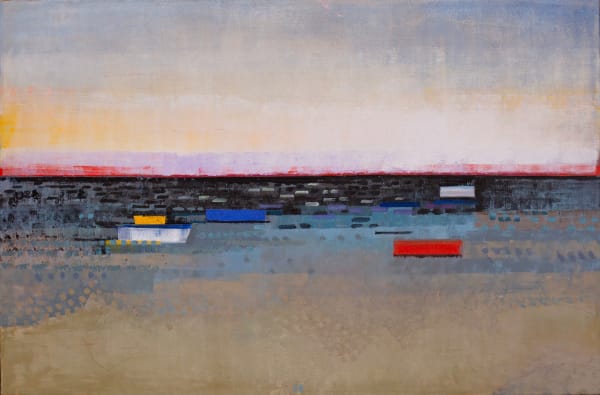Contemplative Landscapes: Online Exhibition
-

Gallery Henoch is pleased to present Contemplative Landscapes, an exhibition of paintings representing a diverse range of artists who have depicted scenic terrain from varying perspectives. Landscape painting is one of the oldest forms of artistry. Dating back to the 16th century, it became a way to capture natural beauty, sometimes aiming to be as realistic in its depiction as possible, and other times allowing painterly emotion to shape the image. Over time, it has evolved and changed with the arrival of different movements and aesthetic preferences. Yet, the capacity of an impressive landscape to move both artist and viewer has changed little. Contemporary artists like John Evans, Lisa Lebofsky, Ben Whitehouse, and Eric Zener have kept this tradition alive.
-
Throughout his career, John Evans has approached landscapes on a visceral level. His loosely abstracted images have variously depicted scenes of the French countryside, of east and west coast beaches, and of water lilies and other pond life. Evans is drawn to rich colors and applies them liberally to his paintings, seeking to create drama among forms that are both planned and impromptu. The result is a transformative experience in which he directs our eyes to the ephemeral beauty he has captured.
-
-
Lisa Lebofsky employs the ever-changing tumultuous action of choppy seas to describe the natural world. She paints in plein air, which means she brings her materials outdoors to capture scenery in real time. This is a method rooted in the Impressionist period when painters thought it was the best way to connect with their surroundings and to immortalize them on the canvas. Importantly, Lebofsky seeks out areas around the globe that are particularly susceptible to the impacts of climate change.
-
-
Ben Whitehouse similarly approaches his paintings with full-body commitment, enjoying the presence of nature around him while he paints. Wading into the midst of streams and rivers, Whitehouse paints for hours a day, recording the environment with meticulous brushwork. Stylistically, he combines British landscape tradition with awe-inspiring American scenery, focusing on the areas around Lake Michigan.
-
-
Eric Zener uses the natural world as a metaphor for moments of uncertainty and change. Unlike his water scenes, his landscapes emphasize the mysteries of nature devoid of human presence. Through this work, Zener explores how it feels to be truly alone yet connected to a universal awareness.
-
-
Each of these artists presents a perspective on the physical world, inviting us to contemplate the singularity of what they see and communicate through their painting.
-













